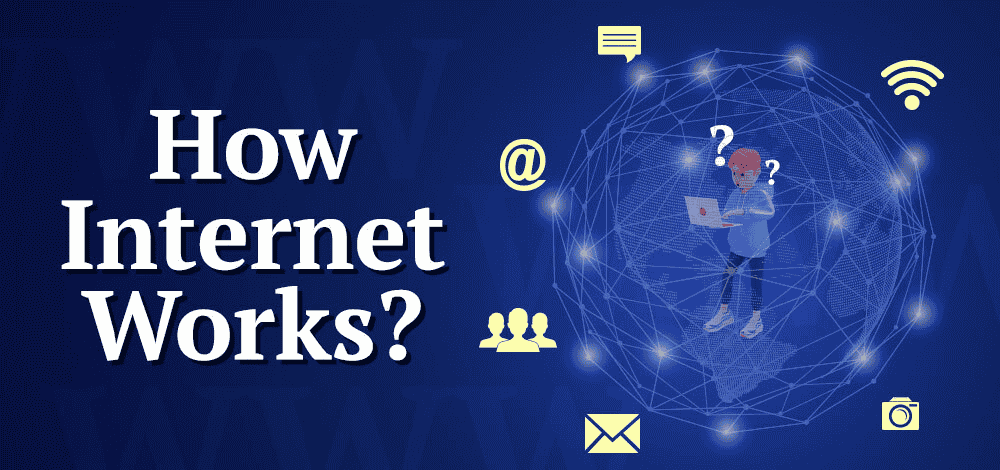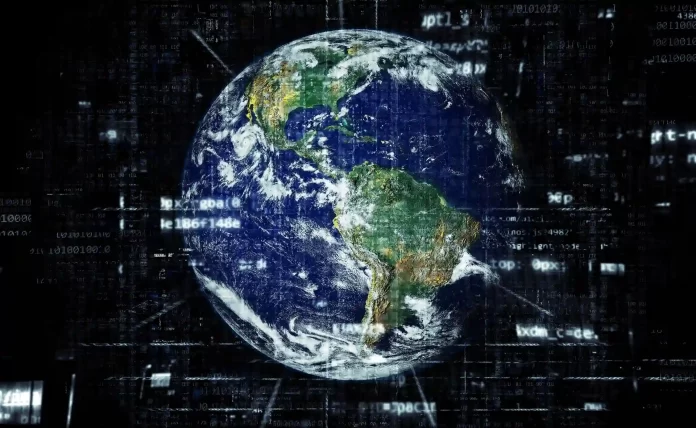How does the Internet Work? Information on AI & Technology Archive
Highlights:
- Internet is a network of networks.
- Data is sent over the internet in small chunks called packets.
- Routers are devices that direct traffic across the internet.
- The internet is owned and operated by many different entities, including ISPs, data centres, and network operators.
India is the second largest country in the world in terms of internet users, with over 50 crore people using the internet in some way or the other as of December 2019. This is according to a report by the Internet and Mobile Association of India.

If you are reading this article, you are likely accessing it through the internet. But how does the internet work? What are you getting access to when you go online? How can messages or videos sent to your phone reach your desktop in one click? What happens between the moment you click something and the moment you see it on your screen?
So, how does the internet work and who owns it? The internet is a vast network of interconnected devices, including computers, smartphones, tablets, routers, and servers. No single entity owns the internet. Instead, it is managed by a global network of organisations. The internet is made up of a network of networks, each of which is controlled by a different organisation.
These organizations are responsible for routing traffic across the internet and ensuring that data is delivered to the correct destination.
When you visit a website, your computer sends a request to the server where the website is stored. The server then sends the website files to your computer, which are then displayed in your web browser. This process is incredibly fast and happens millions of times every second.
At this time, it is very important to know where your website server will be located. Most website servers are hosted in data centers, which are like warehouses where data from different websites is stored in different spaces. Many servers are kept in each data center, and these data centers have facilities to protect the servers and data with security mechanisms.
You are reading this article on outreinfo.com, which is hosted on Google’s data center. Similarly, Facebook, Microsoft, Twitter, and Instagram have their own different data centers. Every website has its own data center, but not all websites open their own data servers. Small websites are different in that they often keep their data in someone else’s data center. Amazon Web Services (AWS) is the king of such companies, providing small servers to small websites to keep their data safe.
It is not necessary for data centers to be in any particular country. For example, Amazon, Facebook, and Twitter all have data centers in America, but you can still access their content from anywhere in the world in just a second. This is because data travels through optical fiber cables at the speed of light.
Optical fiber cables are a network of cables that use light to transmit data. The light travels through the cables by bouncing off the walls, which are made of a reflective material. This allows data to be transmitted very quickly and over long distances.
When you click on a link, your computer sends a request to the website’s server. The server then sends the website’s data back to your computer through optical fiber cables. This data can be text, images, videos, or anything else that is on the website.
The speed of light is approximately 300,000 kilometers per second, so data can travel from one side of the world to the other in just a few milliseconds. This is why you can access websites and other online content so quickly, regardless of where the data is stored.
To connect all the continents to the Internet, a network of fiber optic cables has been laid under the sea. Some large companies have reduced the risk of laying these cables in the depths of the sea by placing them underground in areas where the sea level is rising. These cables then connect to cell phone towers, which use electromagnetic waves to deliver data to users’ screens.
How is it possible to transfer millions of data through these cables? How does the particular data reach the user in the middle of a complex network of millions of devices, millions of users, and millions of servers? After all, how does the server know where to send the data, and how does your device know from which server to fetch the data?
The most important role is played by your IP address. An IP address is like a house address. Data reaches your device in the same way that mail reaches your home. Just as your home has a unique address, every device connected to the Internet has a unique IP address.
When you click on a link, your computer sends a request to the website’s server. The request includes the IP address of your device. The server then sends the website’s data back to your computer at the IP address you provided. This is how data is delivered to your device, even if the server is thousands of kilometres away.
You can request a website by entering the URL of the website in a web browser. A URL is a unique address that identifies a specific website on the internet. It is important to note that just as a device has an IP address, every server or website also has an IP address. This is called the domain in the world of the internet.
Domain names are easier to remember than IP addresses, which is why every website on the internet has its own unique domain name. When you enter a domain name in your web browser, the browser sends a request to the DNS server. The DNS server is a database that maps domain names to IP addresses. The DNS server then returns the IP address of the website to your browser, which then loads the website.
The DNS system is managed by an organization called ICANN (Internet Corporation for Assigned Names and Numbers). ICANN ensures that all domain names are unique and that they are mapped to the correct IP addresses.
With the help of a DNS server, our web browser resolves the domain name of a website to its IP address and sends a request to that server. The request includes the IP address of your device, so that the server can send the website’s data back to you.
Data is sent from a server to a device in small chunks called packets. Jitter can make data transfer slower, but it is not mentioned in your paragraph. If you have ever experienced a slow internet connection, you may have noticed that images and videos load slowly or not at all. This is because data packets can take different paths to reach your device, and some packets may be lost or corrupted along the way.
But how are data packets from different routes combined and ensured to reach your device in the right order? The answer is that the Internet Protocol (IP) defines a set of rules for transmitting data packets across the internet. Every packet routed through IP reaches the correct destination and arrives in the correct order. These rules are known as internet protocols.
What are the small steps between the source and the destination? We call them hops.
Routers are devices that send small data packets to the correct destination or in the shortest time possible, according to their IP addresses, over different fiber optic cable routes. Routers use signals from the closest routers to the destination address to transfer data so that users can access it as quickly as possible.
During data transmission, the data signal can weaken when it travels long distances. This is called attenuation. Similar to how we need to conserve fuel in our cars, we also need to amplify the data signal to prevent it from weakening too much. This process is called amplification.
Data can travel thousands of kilometers. The number of devices connected to the internet and how they amplify signals varies. The number of data packets sent from the source computer (server) to your mobile phone can also vary. Lost data packets can be found in the router’s memory.
According to internet protocols, the destination computer (your phone or device) can request the source computer to resend lost data packets. This is called retransmission. Internet protocols also ensure that data packets are delivered in the correct order. This means that the order in which the data is sent is the same order in which it is received.
Finally, the internet does not have a single owner. The work of providing internet access is done by ISPs (internet service providers). Your internet service provider (ISP) is the company that you get your SIM card or internet broadband connection from. ISPs do not own the entire internet, but they are responsible for providing you with access to it.
There are three tiers of ISPs: tier 1, tier 2, and tier 3. Tier 1 ISPs have their own global fiber optic networks. Tier 2 ISPs purchase bandwidth from tier 1 ISPs and resell it to tier 3 ISPs. Tier 3 ISPs are the smallest and most local ISPs. They typically purchase bandwidth from tier 2 ISPs and provide internet service to consumers and businesses in their local area.
When you access the internet, your data is routed through different ISPs until it reaches the destination server. The ISPs that your data travels through are determined by the best available path between your computer and the destination server. There is no single owner of the internet. The internet is a global network of networks that is owned and operated by many different entities.

